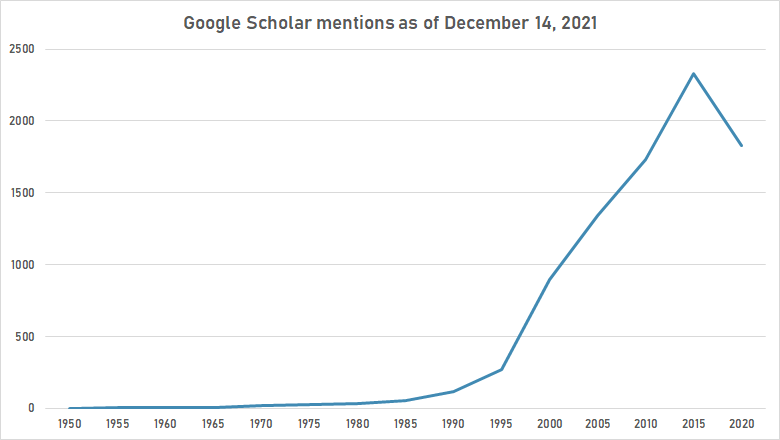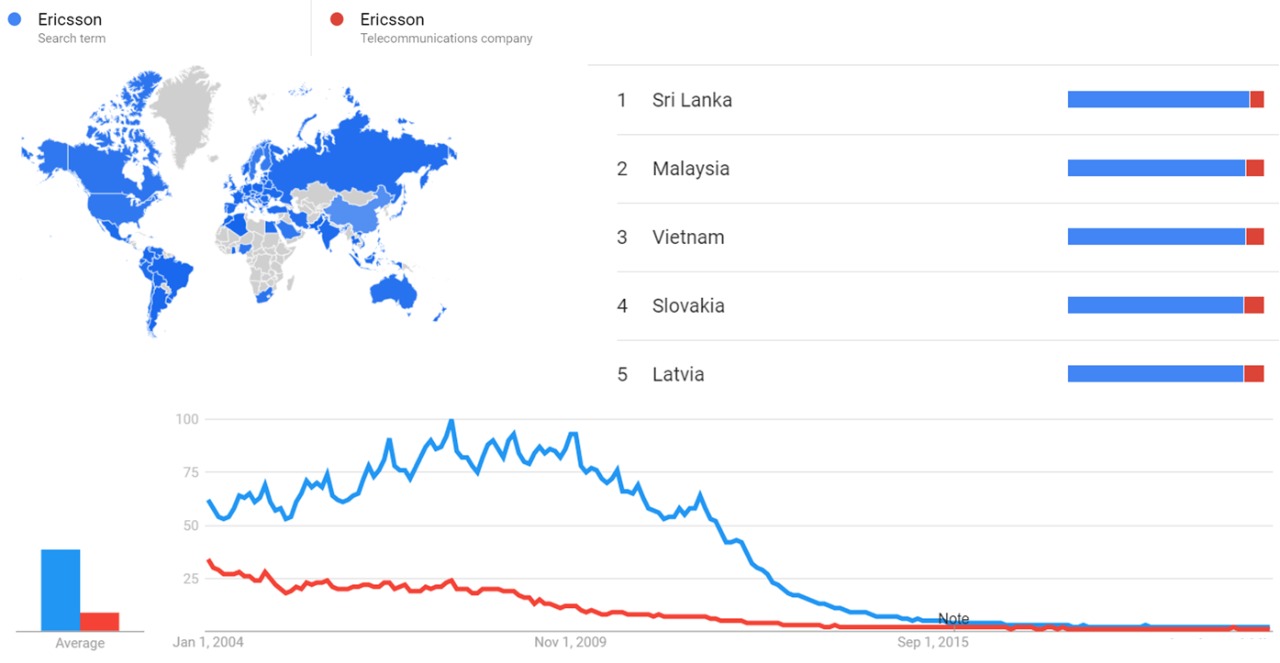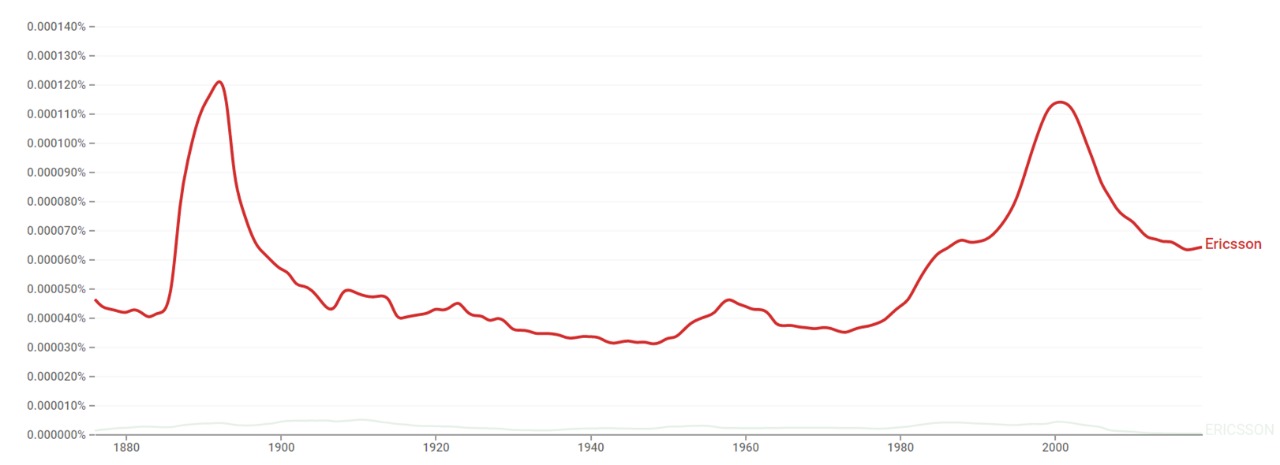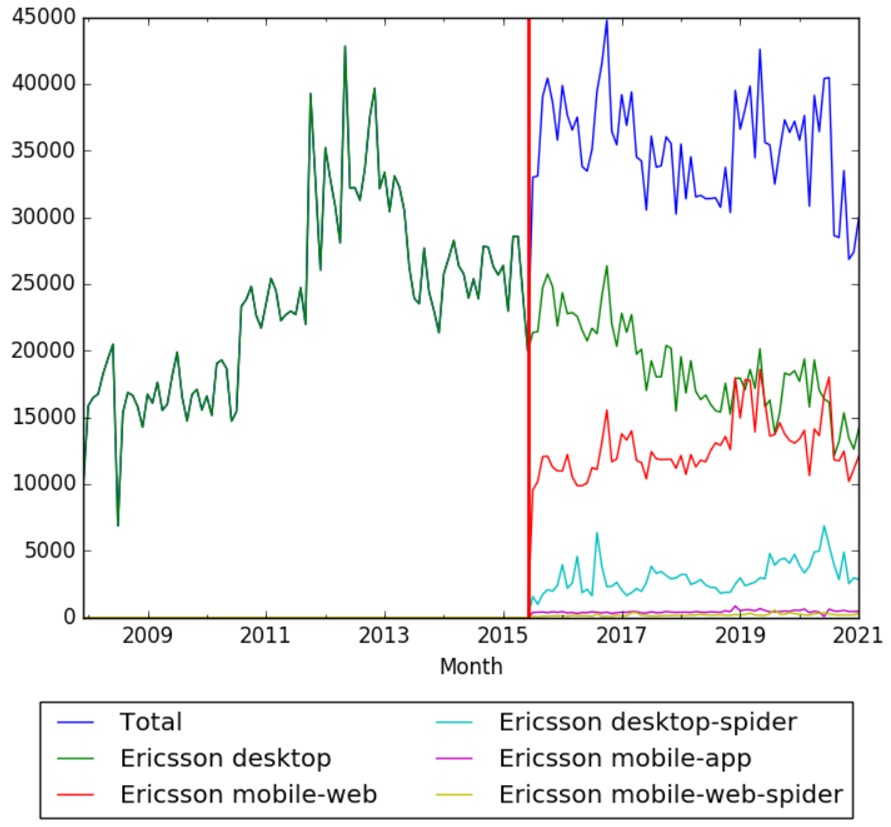Timeline of Ericsson
This is a timeline of Ericsson, attempting to describe important events in the history of the company.
Contents
Big picture
| Time period | Development summary |
|---|---|
| LM Ericsson's export business expands in the 1880s, and explodes in the 1890s.[1] | |
| 1930s | Ericsson’s first speakerphone is designed in the decade.[2] |
| 1950s | Transistor technology is introduced, and new prerequisites are created for developing a more functional speakerphone.[2] |
| 1960s | Ericsson seeks for international expansion, and takes active steps to set up manufacturing subsidiaries in other countries. The reasons for establishing foreign operations in the postwar era are the same as in the 1920s: overseas manufacturing operations were a prime requirement if Ericsson was to be competitive.[3] Ericsson releases one of the first handsfree speaker phones.[4] |
| 1980s | The Nordic countries become the first to start mobile telephone systems. |
| 1990s | Ericsson leads the advancement of telecommunication technologies, expanding its business, and maintaining its dominant position in the rapidly expanding mobile infrastructure market. By 1999, Ericsson holds the majority (27.6%) of the global mobile infrastructure market.[5] |
| 2000s | Ericsson experiences a drastic 40% drop in sales from 2000 to 2002. From the mid-2000s, Ericsson’s sales improve; recovering its global telecommunication infrastructure investment. However, owing to its overwhelming sales growth, Huawei would overtake Ericsson finally in terms of annual sales in 2012.[5] Sony Mobile Communications is founded as a joint venture between Sony and Ericsson.[6] |
| 2010s | In 2012, Ericsson sold its mobile-phone business to Sony, five years after Apple introduced the first iPhone. Today Ericsson is a world's leading provider of technology and services to telecom operators. It is a leader in 2G, 3G and 4G mobile technologies, provides support for networks with over 2 billion subscribers, and has the leading position in managed services.[7] |
Numerical and visual data
Google Scholar
The following table summarizes per-year mentions on Google Scholar as of December 14, 2021.
| Year | "Ericsson" "telecommunication" |
|---|---|
| 1950 | 1 |
| 1955 | 3 |
| 1960 | 7 |
| 1965 | 6 |
| 1970 | 22 |
| 1975 | 29 |
| 1980 | 33 |
| 1985 | 51 |
| 1990 | 114 |
| 1995 | 267 |
| 2000 | 893 |
| 2005 | 1,340 |
| 2010 | 1,730 |
| 2015 | 2,330 |
| 2020 | 1,830 |
Google Trends
The comparative chart below shows Google Trends data for Ericsson (Search term) and Ericsson (Telecommunications company), from January 2004 to February 2021, when the screenshot was taken. Interest is also ranked by country and displayed on world map.[8]
Google Ngram Viewer
The chart below shows Google Ngram Viewer data for Ericsson, from 1876 to 2019.[9]
Wikipedia Views
The chart below shows pageviews of the English Wikipedia article Ericsson, on desktop from December 2007, and on mobile-web, desktop-spider, mobile-web-spider and mobile app, from July 2015; to January 2021.[10]
Full timeline
| Year | Event type | Details | Country/region |
|---|---|---|---|
| 1876 | Lars Magnus Ericsson starts a workshop to repair telegraph instruments and undertake small mechanical engineering jobs.[11][12] | ||
| 1877 | The newly invented telephone reaches Sweden.[1] | ||
| 1878 | L.M. Ericsson begins producing telephone equipment,[4] and is the first to introduce the “single-trumpet” telephone.[13][14] | ||
| 1881 | International expansion | Ericsson signs first major contracts in Norway, Russia and Sweden.[11][15] | |
| 1883 | Organization | Telephone service provider Stockholms Allmä-a Telefonaktiebolag (SAT) is created and buys its equipment from LM Ericsson.[1] | |
| 1890 | International expansion | Ericsson begins selling in Australia.[16] | Australia |
| 1894 | International expansion | Ericsson begins selling telephone receivers in Ethiopia.[17] | Ethiopia |
| 1896 | Ericsson incorporates as Aktiebolaget LM Ericsson & Company, with Ericsson serving as chairman, president, and sole shareholder.[1] At the time of incorporation, the company becomes a major enterprise with more than 500 employees, having produced over 100,000 telephones.[12][1] | ||
| 1896 | International expansion | Ericsson expands into South Africa and delivers its first telephone exchange in Capetown, followed by several orders by other cities.[18] | |
| 1897 | International expansion | Ericsson installes its first telephone exchange in Egypt, in Alexandria.[19] | Egypt |
| 1897 | Britain accounts for 28% of L.M. Ericsson’s sales.[4] | United Kingdom | |
| 1898 | International expansion | Ericsson opens a sales office in London.[20] | United Kingdom |
| 1899 | International expansion | LM Ericsson opens its first foreign factory, in Saint Petersburg, Russia.[1][1] | |
| 1900 | Exports account for about 90 percent of LME's total sales. Contraction of demand in the domestic market and rapidly expanding foreign markets are partly responsible for this dominance of exports.[1] | ||
| 1900 | Staff | Lars Magnus Ericsson retires as president and is succeeded by Axel Boström, his former office manager.[1] | |
| 1900 | Growth | Ericsson reaches 1000 employees globally.[11] | |
| 1901 | Staff | Ericsson retires as chairman.[1] | |
| 1901 | Acquisition | Ericsson acquires Stockholms Allmä-a Telefonaktiebolag (SAT)'s manufacturing operations.[1] | Sweden |
| 1902 | International expansion | Ericsson opens sales office in the United States.[11] | United States |
| 1903 | International expansion | Ericsson receives its first order for a manual switch from the Indian government (a British colony at the time).[21] | India |
| 1903 | Ericssons set up a joint venture company with the National Telephone Company to produce telephones at Beeston for sales to Britain and its colonies.[4] | ||
| 1905 | International expansion | Ericsson wins a concession to operate the telephone network in Mexico City and outlying areas.[11][22] | |
| 1907 | International expansion | Ericsson begins delivering to Indonesia.[23] | Indonesia |
| 1908 | International expansion | Ericsson establishes operations in Siam (Thailand).[24] | Thailand |
| 1908 | Acquisition | Ericsson acquires Deckert & Homolka in Vienna.[4] | Austria |
| 1911 | Acquisition | Ericsson acquires S.I.T. in France.[4] | France |
| 1912 | Acquisition | Ericsson acquires a factory in Budapest.[4] | Hungary |
| 1913 | International expansion | Ericsson begins supplying equipment for Guangzhou's telephone network in China.[25] | China |
| 1917 | The Bolshevik Revolution forces Ericsson to abandon Russia. At the time of the revolution, Ericsson had 3000 employees in Russia, with the market standing for half of Ericsson's total turnover. Absent during the Soviet era, Ericsson would return in 1994.[15][26] | Russia | |
| 1918 | Organization | Ericsson merges with SAT to form Allmä-a Telefonaktiebolaget L.M. Ericsson.[1] | |
| 1922 – 1924 | International expansion | Ericsson establishes in Spain. In 1924, the company opens its first factory in the country in Getafe (Madrid).[27] | Spain |
| 1923 | The first telephone station with the Ericsson 500-switching system in regular operation is put in service in Rotterdam.[11][28][29] | ||
| 1926 | Notable death | Lars Magnus Ericsson dies.[1] | |
| 1926 | Brand | The firm officially adopts the name Telefonaktiebolaget LM Ericsson.[1] | |
| 1931 | "Ivar Kreuger proposes to sell a controlling interest in Ericsson to competitor ITT."[1] | ||
| 1946 | Organization | Ericsson establishes a foundation for television research.[11] | |
| 1950 | Technology | Ericsson's technology enables the world's first international call.[13][11] | |
| 1951 | Acquisition | Ericsson acquires a majority interest in North Electric Company of Ohio.[1] | United States |
| 1956 | Product | Ericsson releases the Ericofon. Also known as the Cobra, it is the first single-piece telephone to be sold commercially.[4][30] | |
| 1957 | International expansion | Ericsson signs a contract with Taiwan Railways, for the delivery of a Centralized traffic control system.[31] | Taiwan |
| 1959 | Product | Ericsson launches Ericovox, a pyramid-shaped device containing all the speaker equipment. Completely transistorized, and power being provided via the telephone line. Ericovox features automatic voice control using amplifiers for outgoing and incoming speech, as well as regulator circuits for both amplifiers.[2] | |
| 1960 | Acquisition | Swedish businessman Peter Wallenberg Jr. purchases ITT's stake in Ericsson.[1] | |
| 1962 | Product | The Ericsson Dialog is introduced.[32] | |
| 1963 | Ericsson begins selling assets in an effort to focus on its telephone businesses.[1] | ||
| 1964 | Internationale expansion | Ericsson establishes in Malaysia.[33] | Malaysia |
| 1965 | International expansion | Ericsson opens a technical office in Kuwait, in conjunction with the country's first orders of the crossbar switching system. | Kuwait |
| 1974 | International expansion | Ericsson opens a factory in Leganés (Madrid).[27] | Spain |
| 1976 | Technology | Ericsson introduces the AXE switching system.[1] | |
| 1977 | Technology | The first digital telephone exchange (AXE) is installed.[11] | |
| 1978 | Product | Ericsson launches Diavox, the first mass-produced touch-tone telephone in Sweden.[34] | |
| 1981 | Technology | Saudi Arabia becomes the first country in the world with a functioning cellular system for mobile telephony, taking into operation a system delivered by Ericsson.[35][14] | |
| 1981 | Organization | Ericsson joins with the United States oil company Atlantic Richfield to form Anaconda-Ericsson, a manufacturer of cables, transmission systems and other equipment. Anaconda-Ericsson would become one of the leading cable manufacturers in the United States, and would also provide Ericsson a way into to the American telecom market, which the company had difficulty breaking into in the past.[13] | United States |
| 1982 | International expansion | Ericsson opens an office in Taipei.[31] | Taiwan |
| 1985 | Recognition | Ericsson is awarded its first AXE contract from British Telecom.[1] | |
| 1988 | Technology | British conglomerate Vodafone orders the first firm order to Ericsson for equipment for the GSM network in the United Kingdom.[36][37][38][11] | United Kingdom |
| 1988 | Acquisition | Nokia acquires Ericsson's computer business.[1] | |
| 1991 | Technology | The firt global system for mobile communication (GSM) phones is introduced.[14] | |
| 1991 | Growth | Ericsson's AXE telephone exchange lines exceed 105 million in 11 countries, serving 34 million subscribers.[11] | |
| 1994 | Growth | Ericsson operates as one of the world's largest manufacturers of telephone apparatus, radio communications instruments, cellular mobile phone telephone switching systems, and cables.[1] | |
| 1998 | Staff | Sven-Christer Nilsson is elected president and chief executive officer of Ericsson.[1] | |
| 1999 | Ericsson holds the majority (27.6%) of the global mobile infrastructure market.[5] In the same year, Ericsson is ranked the second largest telecommunication equipment provider with revenue of US$ 29.26 billion, closely following Nortel (formerly Northern Telecom), which posted US$ 29.80 billion in revenue.[5] | ||
| 1999 | Technology | Ericsson pushes for 3G and mobile internet.[14] | |
| 1999 | Legal | Ericsson and American multinational company Qualcomm settle a patent dispute and Ericsson purchases the firm's wireless infrastructure business.[1] | |
| 2000 | Growth | Ericsson becomes world's leading supplier of 3G mobile systems.[11] | |
| 2001 | Technology | Ericsson conducts the first 3G call for Vodafone, in the United Kingdom.[11] | United Kingdom |
| 2001 | Organization | Ericsson's cell phone division merges with the major Japanese home electronics firm Sony and forms Sony Ericsson Communications.[1][39] | |
| 2003 | Product | The Sony Ericsson T610 is released. The product would be named world's best cell phone by the trade organization GSM Association.[39] | |
| 2003 | Technology | High-speed broadband (wideband code division multiple access, WDCMA) rollout starts globally.[14] | |
| 2005 | Ericsson wins biggest contracts to date to manage operator 3's networks in Italy and the United Kingdom.[11] | Italy, United Kingdom | |
| 2008 | Facility | Ericsson establishes a research center in the Silicon Valley.[14][11] | |
| 2008 | Technology | Ericsson pushes for 4G (Long-term evolution, LTE), the standard the company helps to form.[14] | |
| 2009 | Technology | Verizon and Ericsson collaborate to carry out the first call on 4G network.[11] | |
| 2009 | Recognition | Ericsson wins the IEC InfoVision Award for fiber and backhaul solutions.[14] | |
| 2011 | Acquisition | Ericsson completes the acquisition of Telcordia Technologies.[11] | |
| 2012 | Acquisition | Ericsson sells its mobile-phone business to Sony, five years after Apple introduced the first iPhone.[40] | |
| 2012 | Acquisition | Ericsson acquires Canadian company BelAir Networks, which offers service provider class wireless broadband, with large-scale deployments for cellular and cable operators.[41][42][11] | |
| 2013 | Technology | Ericsson launches the Ericsson Radio Dot System that enables mobile operators to deliver consistently high-performance voice and data coverage and capacity in the broadest range of enterprise buildings and public venues.[14] | |
| 2015 | Staff | Ericsson employs about 118,055 people at the time.[43] |
Meta information on the timeline
How the timeline was built
The initial version of the timeline was written by User:Sebastian.
Funding information for this timeline is available.
Feedback and comments
Feedback for the timeline can be provided at the following places:
- FIXME
What the timeline is still missing
Timeline update strategy
See also
External links
References
- ↑ 1.00 1.01 1.02 1.03 1.04 1.05 1.06 1.07 1.08 1.09 1.10 1.11 1.12 1.13 1.14 1.15 1.16 1.17 1.18 1.19 1.20 1.21 1.22 1.23 1.24 "Telefonaktiebolaget LM Ericsson - Company Profile, Information, Business Description, History, Background Information". referenceforbusiness.com. Retrieved 26 June 2018.
- ↑ 2.0 2.1 2.2 "A revolutionary speakerphone". ericsson.com. Retrieved 27 June 2018.
- ↑ "Internationalization in the 1960s". ericsson.com. Retrieved 14 July 2018.
- ↑ 4.0 4.1 4.2 4.3 4.4 4.5 4.6 4.7 "A Brief History of L M Ericssons". telephonecollecting.org. Retrieved 25 June 2018.
- ↑ 5.0 5.1 5.2 5.3 "Catch-up strategy of an emerging firm in an emerging country: analysing the case of Huawei vs. Ericsson with patent data". researchgate.net. Retrieved 23 July 2018.
- ↑ "Sony Mobile Communications". crunchbase.com. Retrieved 23 July 2018.
- ↑ "Ericsson". crunchbase.com. Retrieved 23 July 2018.
- ↑ "Ericsson". Google Trends. Retrieved 16 February 2021.
- ↑ "Ericsson". books.google.com. Retrieved 20 February 2021.
- ↑ "Ericsson". wikipediaviews.org. Retrieved 21 February 2021.
- ↑ 11.00 11.01 11.02 11.03 11.04 11.05 11.06 11.07 11.08 11.09 11.10 11.11 11.12 11.13 11.14 11.15 11.16 11.17 "Corporate story". ericsson.com. Retrieved 25 June 2018.
- ↑ 12.0 12.1 "Shaping history". ericsson.com. Retrieved 26 June 2018.
- ↑ 13.0 13.1 13.2 "Ericsson, Inc.". mesothelioma.com. Retrieved 27 June 2018.
- ↑ 14.0 14.1 14.2 14.3 14.4 14.5 14.6 14.7 14.8 Hisrich, Robert D. Advanced Introduction to Corporate Venturing.
- ↑ 15.0 15.1 "The Secret to Success" (PDF). sserussia.org. Retrieved 26 June 2018.
- ↑ "Australia". ericsson.com. Retrieved 14 July 2018.
- ↑ "Ethiopia". ericsson.com. Retrieved 14 July 2018.
- ↑ "South Africa". ericsson.com. Retrieved 27 June 2018.
- ↑ "Egypt". ericsson.com. Retrieved 15 July 2018.
- ↑ "Great Britain". ericsson.com. Retrieved 14 July 2018.
- ↑ "India". ericsson.com. Retrieved 15 July 2018.
- ↑ "Mexico". ericsson.com. Retrieved 27 June 2018.
- ↑ "Indonesia". ericsson.com. Retrieved 15 July 2018.
- ↑ "Thailand". ericsson.com. Retrieved 15 July 2018.
- ↑ "Stockholm calling Shanghai!". slideshare.net. Retrieved 26 June 2018.
- ↑ "Our man in Moscow". ericsson.com. Retrieved 26 June 2018.
- ↑ 27.0 27.1 "Spain". ericsson.com. Retrieved 27 June 2018.
- ↑ "The 500 switch – a workhorse". ericsson.com. Retrieved 26 June 2018.
- ↑ "500 switch father". ericsson.com. Retrieved 26 June 2018.
- ↑ "The Original Ericofon". blog.retroplanet.com. Retrieved 28 June 2018.
- ↑ 31.0 31.1 "Taiwan". ericsson.com. Retrieved 14 July 2018.
- ↑ "Dialog – the popular choice". ericsson.com. Retrieved 26 June 2018.
- ↑ "Malaysia". ericsson.com. Retrieved 14 July 2018.
- ↑ "Diavox 1978". ericsson.com. Retrieved 27 June 2018.
- ↑ "Breakthrough for mobile telephony". ericsson.com. Retrieved 26 June 2018.
- ↑ Meurling, John; Jeans, Richard. The mobile phone book: the invention of the mobile phone industry.
- ↑ Webb, Pauline; Suggitt, Mark. Gadgets and necessities: an encyclopedia of household innovations.
- ↑ Asia-Pacific Telecommunications, Issues 1-2; Issues 4-10.
- ↑ 39.0 39.1 "Sony Ericsson T610 from 2003". ericsson.com. Retrieved 26 June 2018.
- ↑ "APPLE AND ERICSSON ARE STILL SUING EACH OTHER OVER PHONE PATENTS". wired.com. Retrieved 23 July 2018.
- ↑ "BelAir Networks". crunchbase.com. Retrieved 27 June 2018.
- ↑ "BelAir 100SNE Wireless Access Point Teardown". electronics360.globalspec.com. Retrieved 27 June 2018.
- ↑ "Ericsson SuccessStory". successstory.com. Retrieved 25 June 2018.



